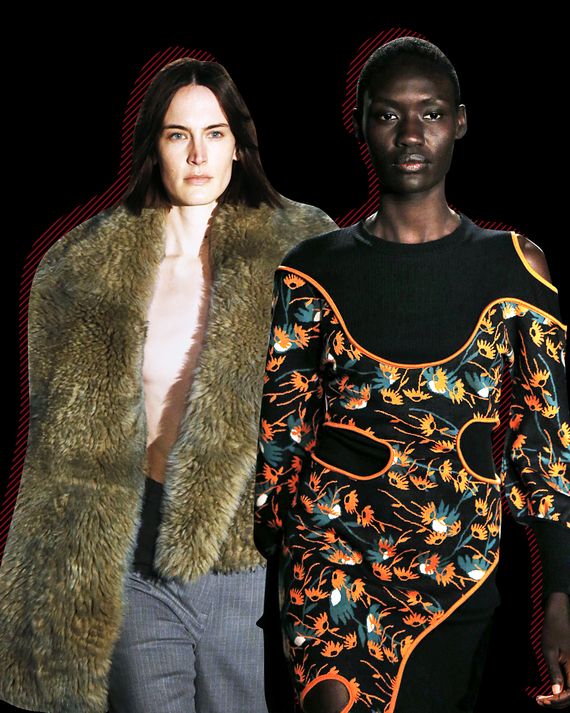
Yesterday, in a rusted Quonset hut in Brooklyn, Zoe Latta and Mike Eckhaus showed the 18th collection of their brand Eckhaus Latta. The designers have come far since their first shows when they used dead-stock fabrics, had ordinary people (mostly friends) model, and offered knits that were sculptural and somewhat figure-revealing but too drab to be called sexy or even conventionally feminine or masculine.
In those nine years, we’ve seen a collective shift in what is defined as fashion. There have been powerful (and overdue) expressions of black culture and identity, most notably from Kerby Jean-Raymond of Pyer Moss. There have been some extraordinary efforts to reflect gender and sexuality in more relevant ways — from Rio Uribe of Gypsy Sport, for example. And from the great Shayne Oliver of Hood By Air we saw street clothing interpreted with a furious new energy — largely through amazing cutting and deconstruction. Latta and Eckhaus, in their plain and almost awkward-looking clothing, and in their choice of models, have played a large role in this shift — as the Whitney Museum of American Art acknowledged last summer with an installation of their work.
Yet, in at least one important way, Eckhaus and Latta haven’t come far at all. They have stuck fast to their signature style while refining and refining it. That was the message on Saturday. Their opening look featured a lush fake fur jacket in a mottled blend of gray and tawny beige, paired with gray pinstripe pants. I remember a pale pink shag coat the designers showed several years ago, on a rainy night at PS1. The new jacket, with generous lapels and a slightly asymmetrical shape, was the sophisticated follow-up. And, as Latta pointed out backstage, with a laugh, the first version had been stitched by hand. The designers simply didn’t have the resources or the facilities to do better work.
Now they do. Another example was a dark ribbed knit top — there was also a dress style — with a dark floral-patterned piece layered over it, almost like an openwork vest assembled from random, oblong fabric cuts that were rounded off at the edges. It made me think of the patchwork vests that Nicolas Ghesquière once did for Balenciaga, in the early aughts, which were based on a design by Kaisik Wong, a designer in San Francisco in the 1970s. Except the Eckhaus Latta pieces were integrated into the knitted base; it was one garment. At the same time, the shape and the sheen of the floral bit added a simple sculptural element. The result looked amazing and new. And, as Latta said, the design was possible to produce because the designers had access to the right facilities.
I was also impressed with how they have developed their dyed jeans, a cornerstone of their brand. This season, they appear to be hand-striped in orange and off-white below the knee; then there’s a black section, with the top of the pants in beige. “We’re getting much better with our dying techniques,” Eckhaus said, adding that he and Latta felt that the effect was starting to look a bit too tie-dyed. “We wanted the effect to be more painterly.”
Another thing they’ve done is to carefully consider more classical feminine shapes, like a corseted jacket or a rounded full sleeve. A couple of seasons ago, Eckhaus and Latta introduced a bustier, an obvious nod to haute couture. The shape didn’t quite fit with their aesthetic, but it was a worthwhile experiment. Now they’ve modified these overtly feminine shapes and blended them more naturally into their style — with a fabulous, zip-front jacket in an austere, speckled black knit with lightly rounded sleeves; a jean jacket with more volume in the sleeves; and a blazer in a gray toilelike fabric with the hint of boning at the waist. Everything was shown with an exaggerated court-style shoe in fleece, an improbable collaboration with the boot-maker Uggs.
For me, these small gestures added a new layer of interest to Eckhaus Latta — a bit of glamour. But what isn’t lost is the outsider-artist sensibility that first shaped their designs, and which they have steadily and masterfully built upon.








